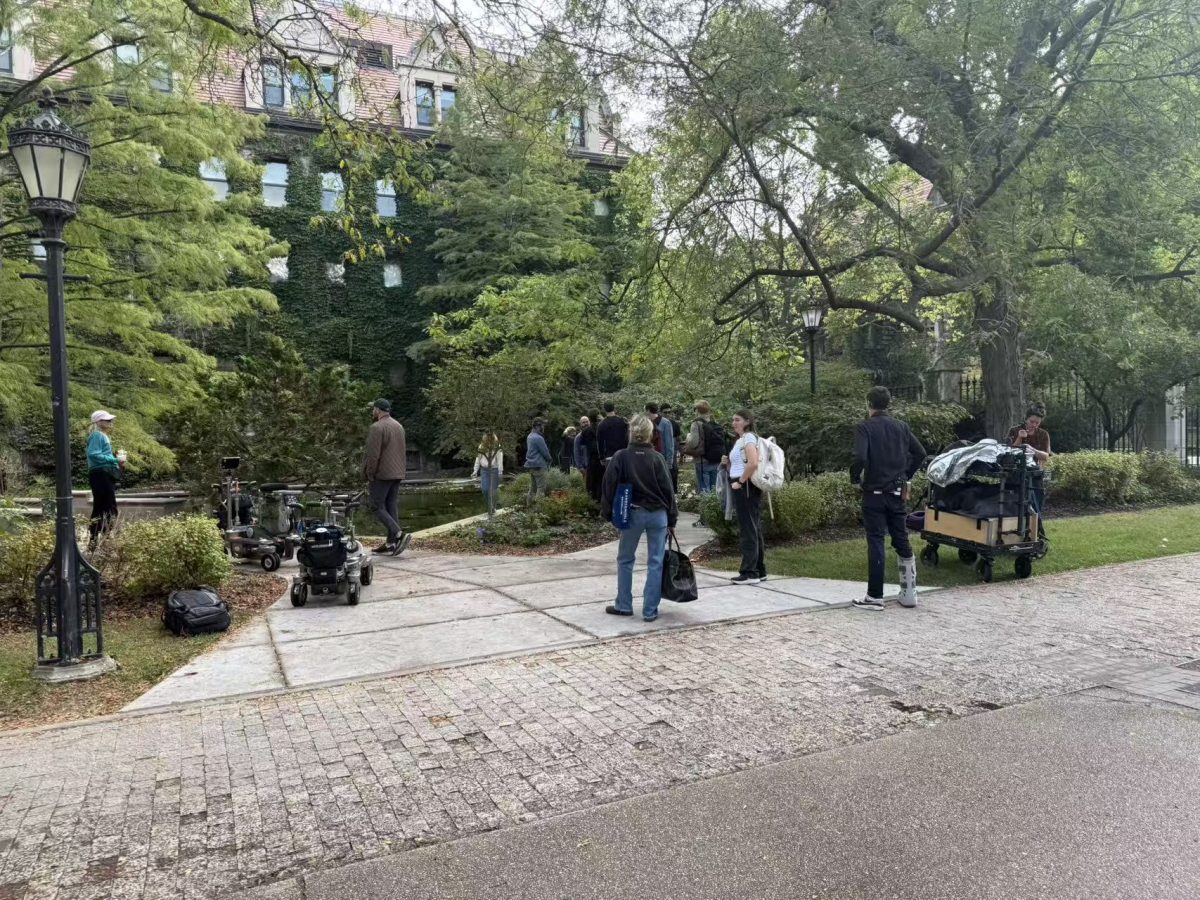In the summer of her third undergraduate year, Imai Jen-La Plante was doing particle physics research in Chicago when she first had the opportunity to visit Fermilab in Batavia, Illinois.
“I met people, toured the lab, and got a sense of the scale, and from then on, I was hooked,” Jen-La Plante said.
Now finishing her second year as a graduate student in physics, she is heading off this summer to Geneva, Switzerland, to an even bigger lab: The European Organization for Nuclear Research, or CERN, the biggest particle physics laboratory in the world.
Jen-La Plante is just one member of a large University of Chicago team, stationed here and in Switzerland, involved in the final stages of designing the Large Hadron Collider (LHC), a particle accelerator set to begin operation around spring 2008.
“There is a real excitement of exploration,” said Melvyn Shochet, the Kersten Distinguished Service Professor of Physics and a member of the Chicago ATLAS group, which is designing one of the five particle detector experiments for the LHC.
James Pilcher, a professor in physics and the Director of the Enrico Fermi Institute, also a contributor to the ATLAS experiment, has been working on the LHC for the last ten years.
Specifically, he said, his team has been involved with designing and preparing electronic parts of the ATLAS detector, called the hadron calorimeter. The machine is used to measure quarks and gluons, which Pilcher described as parts of protons: “When you have two protons interacting, they are made up of other things,” he said. “An atom is made up of a nucleus and electrons—it’s a composite object—and in the same sense, protons have quarks inside, as well as other particles, called gluons, which hold the quarks together.”
Within the LHC, protons accelerate in opposite directions in a 27-km–long ring, colliding 40 million times a second. Detectors can only record 100 interactions per second, and Pilcher said the Chicago team’s work has focused on deciding which interactions they want to record.
“We want the hundred that are the interesting ones,” Pilcher said. “We’ve got some pretty good ideas about what we want to go after. There have been experiments at Fermilab that are terrific for gaining experience and knowledge of these collisions at lower energies and filling in background information about what these interactions look like.”
Among the things Pilcher and others are looking are evidence of dark matter, supersymmetry, and the Higgs boson, a hypothetical particle that could explain the origin of the masses of other particles.
“We’ve never been able to see dark matter here on Earth,” Pilcher said, referring to matter that scientists have postulated composes 25 percent of the mass of the universe. “It would be terrific to create it and be able to control its conditions.
“There is also an attractive theory called supersymmetry that predicts the existence of dark matter,” he said. “One of the things we’re going to do is look for evidence of supersymmetry.
“And then there is the Higgs boson. Many things can be predicted with great precision in physics, but for the theory to work there needs to be a new particle. Everyone expects it to be there—we have an idea of how heavy it is and its expected characteristics. That’s a big target, to observe the Higgs boson.”
Shochet highlighted the potential for new discoveries enticing the scientists involved with the LHC project.
“There will almost certainly be new phenomena never observed before,” he said. “There are many possibilities that people have postulated—one example is creating a dark matter particle and being able to study its properties, another is finding more than three dimensions curled up in dimensions that we don’t see. There is a lot of excitement in not knowing what nature has chosen for us.”








